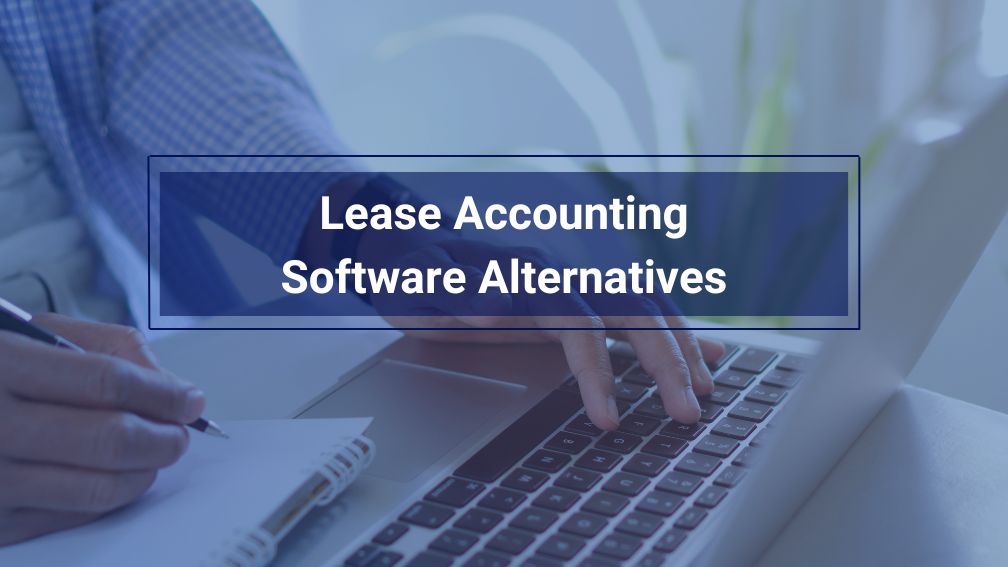Know Your Lease Accounting Software Alternatives
Last Updated on March 8, 2024 by Morgan Beard
Reviewing lease accounting software alternatives is a critical step in updating your internal controls while maintaining compliance requirements. The software you rely on plays a pivotal role in your organization’s success, especially when it comes to accounting compliance with new guidance from the Financial Accounting Standards Board (FASB) for both private and public companies.
It’s not just about keeping up with reporting standards; it’s about gaining strategic insights that can drive your business forward. However, recognizing when to make a switch in software providers can be a complex decision, fraught with considerations of cost, time, and potential disruption. Here are key indicators that it might be time to change your finance or accounting software provider.
Your Current Software Can’t Keep Up with Growth
Under the new accounting guidance growth is a double-edged sword. It’s the goal of nearly every business, but with it comes the need for more robust software solutions that can handle your entire lease portfolio. If your current system is struggling to handle increased transaction volumes, lacks scalability, or cannot support collaboration between all lease stakeholders, it’s a clear sign you need a software upgrade that can manage lease data effectively. If the accounting team is still finding out about leases months after they have commenced, it’s a great sign that your software solution is not working for your team. The right software should grow with you, offering scalability and flexibility to adapt to your changing needs and the new accounting standard.
Ongoing Compliance Becomes a Challenge
Regulatory compliance is a moving target, with rules and standards that evolve continually, like the new guidance from FASB. If your software isn’t keeping up with the latest regulations, you’re at risk. A good software provider not only updates their systems for compliance changes but also proactively informs you about potential impacts on your operations. A centralized platform built for data gathering, data integrity, data security, rental payments, and complex calculations is essential for organizations to seamlessly stay compliant. The new standard challenges the modern tenant lease portfolio to be transparent with a clear audit trail for accounting firms and auditors to digest the lease accounting assumptions made in order to comply with ASC 842 or IFRS 16.
Inadequate Reporting and Analytics
Data-driven decision-making is at the heart of modern business strategy, including lease data management and asset management. If your current system offers limited reporting capabilities or lacks customization in reporting, you’re missing out on critical insights that could drive your business forward. Your software should offer comprehensive, customizable reporting and analytics tools that help you understand your leasing obligations and identify trends and opportunities. You shouldn’t need IT’s help to get what you need from your lease accounting software. Out of the box reports should, at a minimum include: Amortization schedules, journal entries, financial statement disclosure support, roll forward of lease liabilities and right of use assets, and leasing assumptions report. In addition, it should act as a central repository for lease information for CPA firms, auditors, in-house accounting teams and any business entities with a vested interest in the organziations lease portffolio.
Poor User Experience and Support
User experience and role-based access is more important than ever. If your team finds the software cumbersome, unintuitive, or outdated, it can lead to reduced productivity and even data entry errors. For leases, it is especially important to have a single source of truth for all stakeholders within the lease lifecycle, including lease administrators, accountants, auditors, and lessors. Therefore, finding a solution that is suitable for not only lease administrators but the lease accounting team is paramount, with role-based access for different user groups. Furthermore, inadequate customer support from your software provider can exacerbate these issues, leaving your team frustrated and unsupported. A switch to a provider that offers an intuitive interface and exceptional customer support can dramatically improve your team’s efficiency and job satisfaction.
Cost Inefficiencies and Manual Calculations
Finally, evaluate the cost-value ratio of your current software. If you’re paying for features you don’t use, or if the software is more expensive than newer, more efficient solutions on the market, it may be time to reassess your provider. Remember to consider not only the direct costs but also the indirect savings from improved efficiency, better decision-making capabilities, and reduced risk of compliance issues. Additionally, if your team is still relying on manual calculations and journal entries for leases, a more automated solution could save significant time and reduce the risk of errors, especially when dealing with complex scenarios like purchase options and controls.
Lease Accounting Software Alternatives
Deciding to switch lease accounting software providers is a significant move, one that requires careful consideration of your current and future needs, including compliance with the new accounting standard. Look out for these signs as indicators that it’s time to make a change. The right cloud-based solutions should not only meet your current needs, enable collaboration but also anticipate future business processes, ultimately helping you navigate the complexities of the financial landscape with confidence and clarity. If you’ve decided to make the move, refer to our blog on How to seamlessly change Lease Accounting Software Providers.
Lease Accounting Resources
Check out our resource hub. We have the templates, spreadsheets, and calculators to help you manage entire lease lifecycle.
